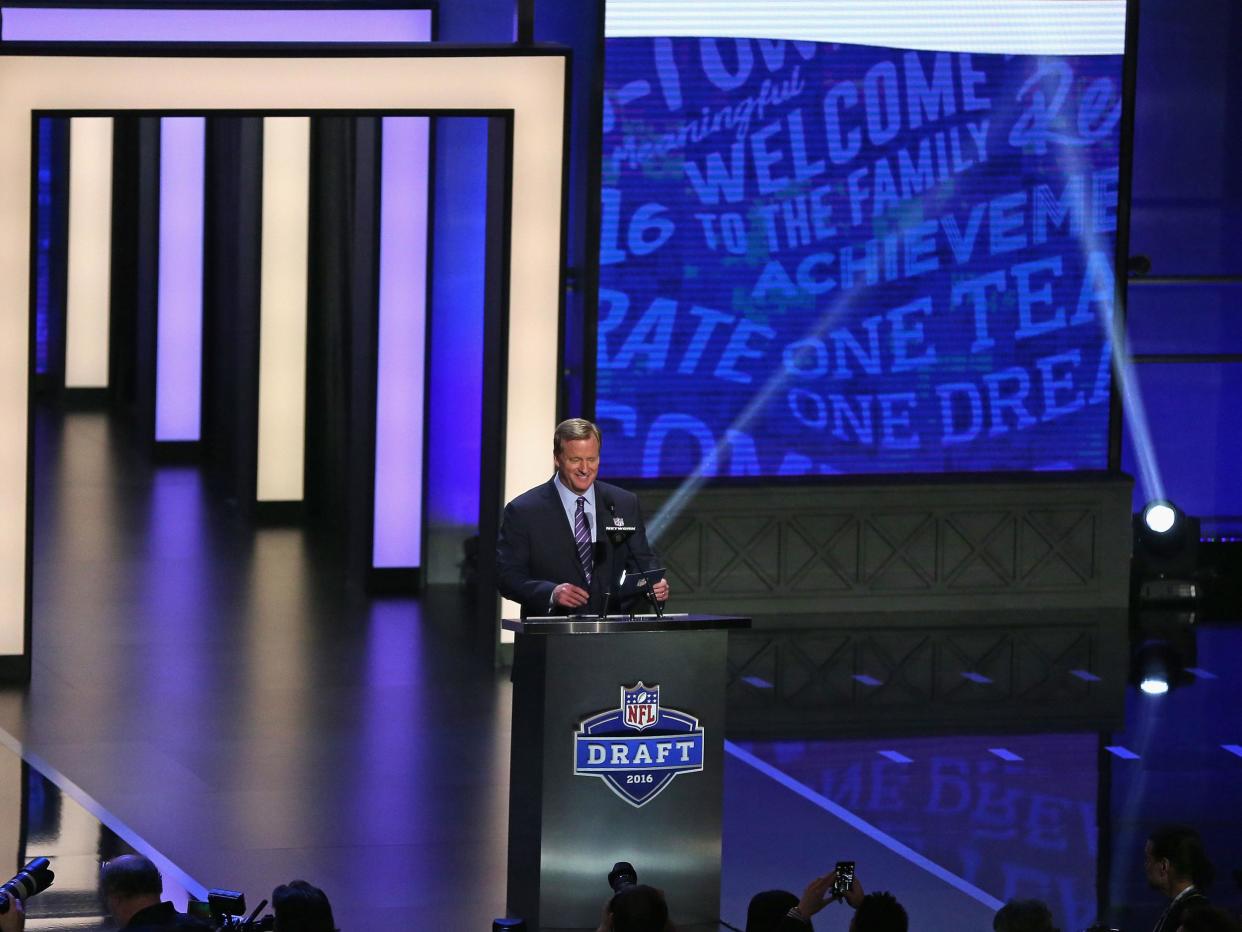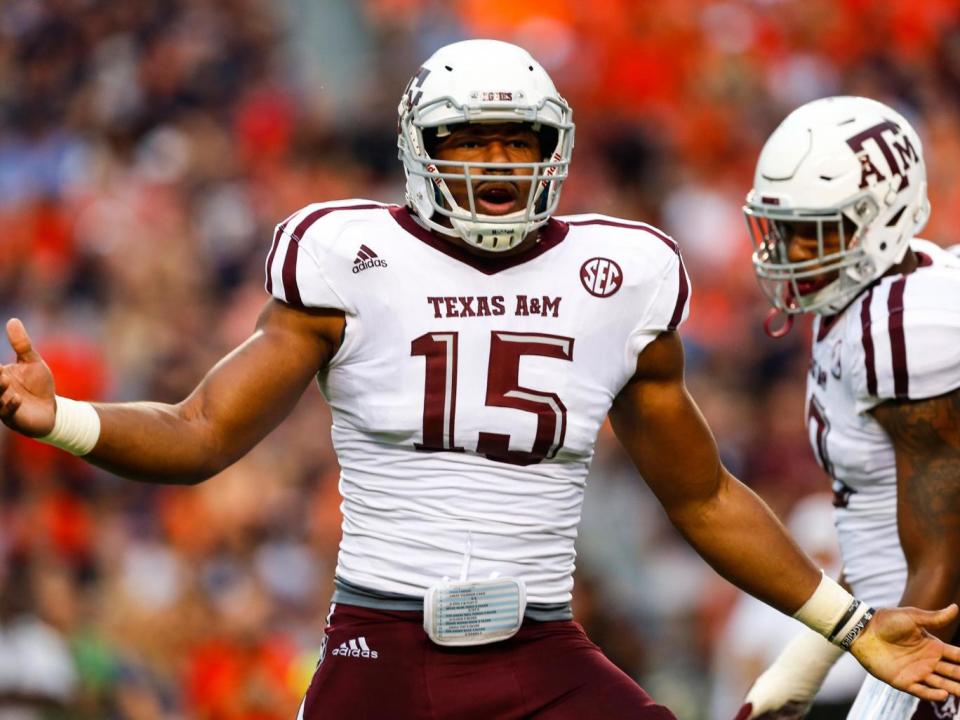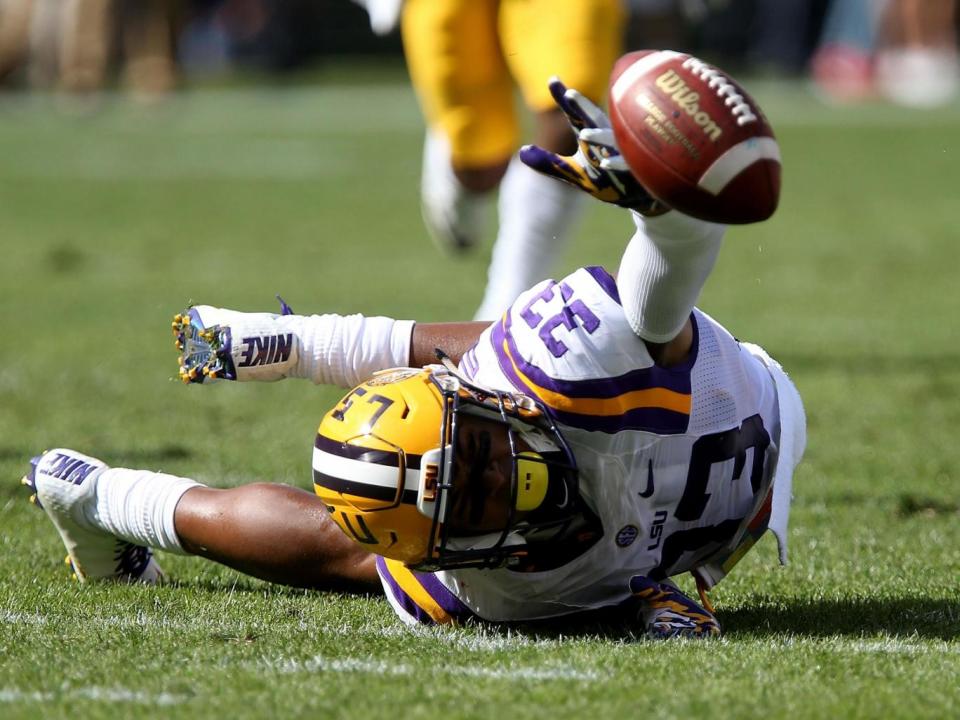NFL draft 2017: Myles Garrett and then what? Thursday's first round previewed

“With the first pick of the 2017 NFL draft, the Cleveland Browns select Myles Garrett, defensive end, Texas A&M.”
And that’s about all we know.
It is the week of the NFL draft and the only real certainty – or, at least, an accepted likelihood – is that the Cleveland Browns will walk up to the podium and take the Aggies pass-rusher, almost universally considered the best player in college football, to kick off proceedings.
From then, San Francisco are on the clock and the mystery begins.

It is easy, even for everyday fans of the game, to work every team’s needs and mock drafts all over America (and, indeed, the UK) have attempted to place college stars into the NFL teams according to need, system fit and value for months now.
But on Thursday night they will all be set ablaze, doused in the petrol of unforeseen trades and sparked into flame by the spontaneity, genius and stupidity (delete as appropriate) of these NFL front offices.
The confused quarterback class, one of the most baffling in years, has given analysts a number of headaches. For the last two years we have known with near certainty before the draft that the top two picks were going to be the top two quarterbacks and that was that. Only then did elite players in other positions became relevant.
As always, this year there are teams picking early who aren’t enamoured with some of the top-rated talent, and would like to trade down, picking up extra draft picks in the process. There are also teams picking early who have too many needs to fix in one draft. Rather than pick one (hopefully) incredibly good player, they would prefer to trade out of their high pick and acquire a number of later selections, populating their roster with several (hopefully) very good ones and, more importantly, increasing their chance of finding one of those.
San Francisco, picking second, and the Chicago Bears at three are two teams that fit the above but the lack of elite quarterback talent means there may not be the interest necessary to get an acceptable offer. They could be forced to pick there – the big question is who.
Conventional wisdom – and remember, this gets blown open with the benefit of hindsight as every first round contains a gaggle of overdrafted busts – is that below Garrett there are around 15 very good players who could go in any order depending on team needs.

There are generational talents at safety, cornerback and running back but a dearth of talent in the offensive line class and, as discussed earlier, the quarterbacks. There are intriguing wide receivers but it may not be a stacked class compared to recent years that have produced a number of top-shelf wideouts. Indeed, if you’re looking for some talent to catch the ball then you may be better off dipping into a tight end class that is considered to be the best in maybe a decade, stuffed with physical freaks and feeding a position that is evolving in the league.
Where the first quarterback goes will dictate how the first round looks. In our first mock draft it was Pat Mahomes heading to Arizona way down the board but if the 49ers take the plunge at 2, we may have four signal-callers go by the time the Cardinals get their chance.
Deshaun Watson, Mitchell Trubisky, Deshone Kizer and Mahomes might not be first-round talents but such is the need for quarterbacks that they are all likely to become first-round selections. Whether the pressure that brings is a good thing depends on the player’s make-up but good teams don’t tend to overdraft players. If you’re a general manager or head coach diving in on this QB class then your job is on the line if your guy doesn’t make it.
Further complicating the picture is the fact that there are distinct categories of QB-hunters.

San Diego (7), Arizona (13), the New York Giants (23), Kansas City (27), Pittsburgh (30) and New Orleans (11 and 32) all need a successor to their veteran incumbent. Cleveland (1 and 12), San Francisco (2), Chicago (3) and the New York Jets (6) need someone to start now, while Jacksonville (4), Cincinatti (9), Buffalo (10), Washington (17) and the Houston Texans at 25 all need to upgrade their current starter with differing levels of desperation.
That’s a complex puzzle to solve when only four guys are even considered to be potential starters down the line. The best quarterback from last year’s class – albeit after just one season – has been fourth-round pick Dak Prescott, so lesser-fancied prospects like Nathan Peterman and Davis Webb may be more appetising if teams are looking for bang for their buck and high upside from minimal investment.
The smarter teams in the league will undoubtedly be looking to take advantage of some of the deeper position groups and there are special-looking talents. Jamal Adams and Malik Hooker (both safeties) will almost certainly go in the top ten, Solomon Thomas and Jonathan Allen are defensive linemen who should also fall in that bracket. Ohio State pair Gareon Conley and Marshon Lattimore are expected to be the first two cornerbacks off the board but in what order and by when is anyone’s guess. They both could have disappeared by the time Jacksonville make their pick at four but, equally, one of them could be hanging around waiting for that life-changing phonecall until the teens.

Reuben Foster might just be the second-best player coming out of college this year but his position, middle linebacker, is less valuable and will damage his stock. Teams picking in the mid-to-late first round will be delighted should he fall that far, but all it does is add to the uncertainty.
But in the end uncertainty is what the draft is about.
Hundreds and thousands of analysts pore over game film and try to sort an army of college students into an order based on their physical talents, technical skills, mentality, position, background, age and much more besides.
It is an impossible jigsaw puzzle of spreadsheets with no correct answer – and who would have thought that could be so fun?
In the same way that football fans love transfers because it highlights the prospect of their team improving, the draft is a fascinating time in American football.
Some of these franchises are going to make decisions that will set them up for 10-15 years with future hall-of-fame players.
Others will pick players who, before their rookie contracts are up, will be out of the sport entirely and working as a nightclub doorman.
Those are the stakes. That is the uncertainty. This is why the draft promises to be as fascinating as ever.

 Yahoo News
Yahoo News 
